What's New
Displaying results 4061 - 4070 of 4924
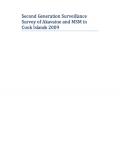
Resource | Publications,
The Cook Islands is a very small Pacific island country, both in terms of geography and population. HIV is practically unknown in the Cook Islands, with only two cases of HIV infection ever reported and no residents currently living with HIV. However, previous Second Generation Surveillance (SGS) surveys have documented high rates of STI infection, especially Chlamydia, among antenatal women and youth in 2006. In 2008 young people under 24 years reported high levels of risky sexual behavior, including multiple and concurrent partners and low levels of condom use.
This report documents the findings from a Second Generation Behavioral Surveillance Survey (BSS) which was conducted among akavaine and men who have sex with men (MSM) in the Cook Islands in 2009.
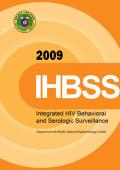
Resource | Fact Sheets,
Compilation of the data on the Integrated HIV Behavioral and Serologic Surveillance among the most-at-risk populations (MARP) from 2005-2009:
- Female Sex Workers (FSW)
- Youth Female Sex Workers
- Male who have Sex with Males (MSM)
- Youth Male who have Sex with Males
- Injecting Drug Users (IDU)
- Youth Injecting Drug Users
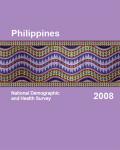
Resource | Publications,
The 2008 National Demographic and Health Survey (2008 NDHS) is a nationally representative survey of 13,594 women age 15-49 from 12,469 households successfully interviewed, covering 794 enumeration areas (clusters) throughout the Philippines. This survey is the ninth in a series of demographic and health surveys conducted to assess the demographic and health situation in the country.
The survey obtained detailed information on fertility levels, marriage, fertility preferences, awareness and use of family planning methods, breastfeeding practices, nutritional status of women and young children, childhood mortality, maternal and child health, and knowledge and attitudes regarding HIV/AIDS and tuberculosis. Also, for the first time, the Philippines NDHS gathered information on violence against women.
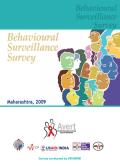
Resource | Publications,
Behavioral Surveillance Survey (BSS) provides information on behaviors among subpopulations who may be difficult to reach through traditional household surveys, but who may be at high risk of contracting or transmitting the virus.
This was the first round of BSS for the Maharashtra State and would serve as the baseline. Nine various groups were covered under the survey; four core group categories (brothel and non-brothel based female sex workers, men having sex with men, injecting drug users), three bridge groups (clients of female sex workers, truckers and helpers and single male migrants) and general population groups.
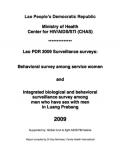
Resource | Publications,
While the prevalence of HIV among female sex workers and clients remains inferior to 0.5% as 2008, a survey conducted the same year in Vientiane found 5.5% prevalence of HIV among MSM. Additional information is needed to document the state of the epidemic in this particular high-risk group that is currently the group with the highest incidence in neighboring Thailand.
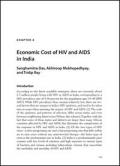
Resource | Publications,
According to the latest available estimates, there are currently about 2.5 million people living with HIV or AIDS in India, corresponding to a HIV prevalence rate of 0.36 percent for the population ages 15–49 (IIPS 2007). While HIV prevalence thus remains relatively low, there are several factors that are unique to India’s HIV epidemic, and need to be taken into account when assessing the impact of HIV and AIDS.
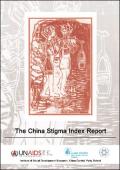
Resource | Publications,
This report is based on a survey of the experience of more than 2000 respondents living with HIV in China. The survey will increase the understanding of how stigma and discrimination is experienced by people living with HIV (PLHIV) and it is hoped that the results will inform future discussions, programmes and policies in China.
The information gained will provide data on the current situation and areas requiring future action. These include anti-stigma and anti-discrimination campaigns, improving workplace and education sector policies, informing the formulation of laws relevant to the AIDS response and promoting the realization of human rights. Consequently, the report is an advocacy tool, which will support the collective goal of the Government, the UN, NGOs and community based organisations alike to reduce stigma and discrimination linked to HIV in order to reach the goal of Universal Access to prevention, treatment, care and support, and the Millennium Development Goals (MDGs).

Resource | Publications,
The purpose of this study was to investigate the prevalence and determinants of domestic violence in Mongolian women. The survey was administered to 5500 people in 1000 households randomly selected from two districts of Ulaanbaatar, Mongolia. Domestic or intimate partner violence (IPV) is widespread in Mongolia and is usually committed in family circles, often away from public view. This study suggests that increasing employment for men may help reduce poverty and alcohol abuse and, thus, IPV.
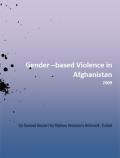
Resource | Publications,
Afghanistan Women's Network, a coordinating network of over 70 women organizations and groups, and more than 3000 individual members was established following the 1995 Beijing +5 conference, in Pakistan. Since then, the network has been actively involved in women empowerment, activism for women's rights, addressing child protection at the local, national and international arenas. The member activists of the network, have been struggling hard for the realization of women's rights as defined in national and international commitments of the Afghanistan government as well as within the Afghan society.
This report aims to provide a general overview on the current conditions of women of Afghanistan from a gender perspective. The network believes that the conditions of women can only be empowered if her status and condition is improved within her relations with the other half, both at the domestic and public spheres. Therefore for the purpose of this report, Violence against Women and Gender-based Violence have been used interchangeably in this report, however they do not have the exact same meanings.
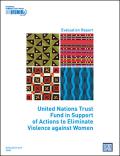
Resource | Publications,
Violence against women and girls is a problem of pandemic proportions and one of the most widespread human rights violations in the world. There is an increasing commitment by governments and donors to respond to this huge problem, evidenced by the adoption of a growing number of national policies and laws, and increased resources being made available for programme implementation -- including for the UN Trust Fund (UNTF).
This report presents the results of the evaluation of the United Nations Trust Fund in Support of Actions to Eliminate Violence against Women. Its importance is closely related to the current growing global momentum on ending violence against women and girls, including the General Assembly Resolutions from 2006 and 2007 on Intensification of Actions to Eliminate Violence Against Women and most recently, with the launch of the Secretary-General’s Campaign 'UNiTE to end violence against women'.





